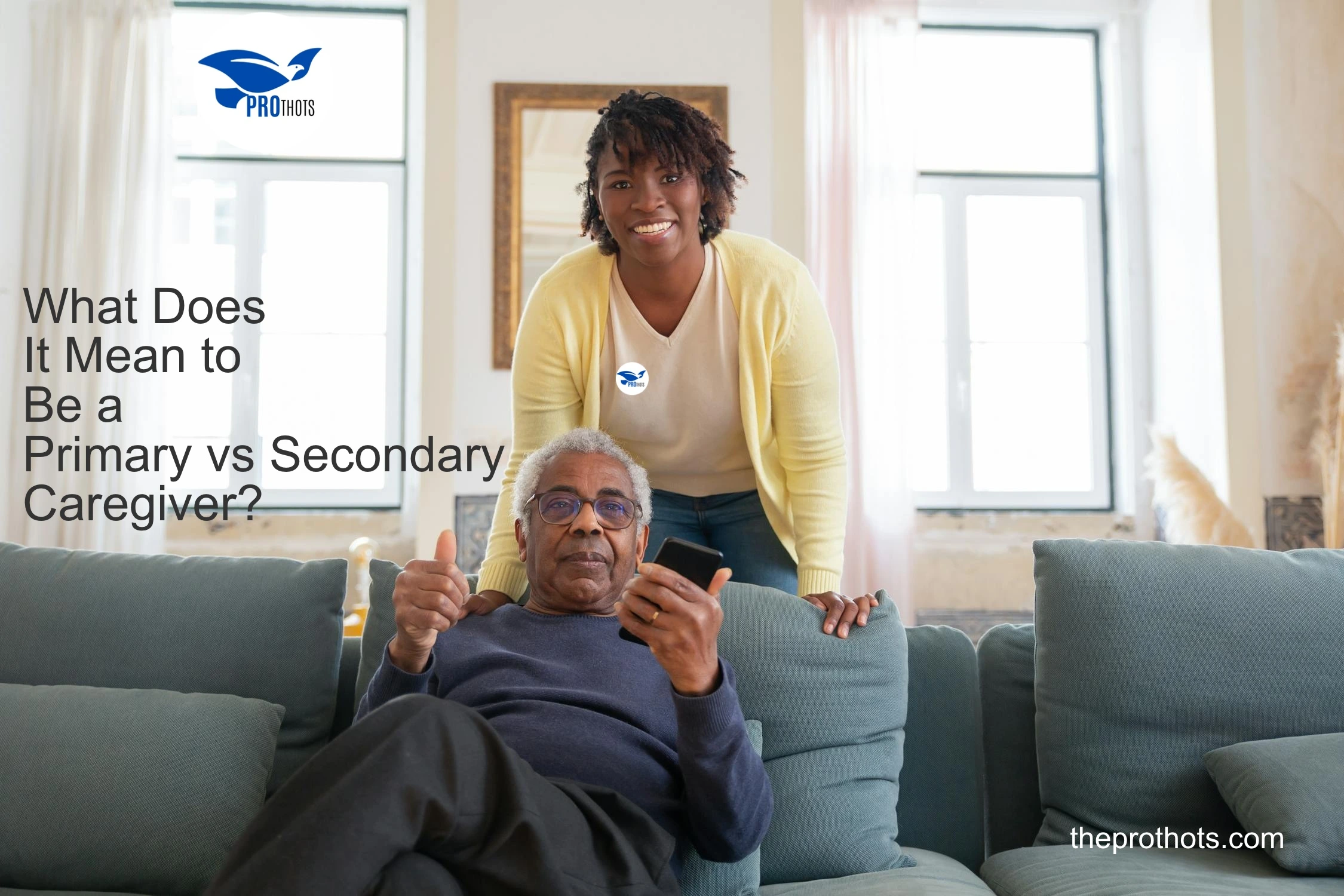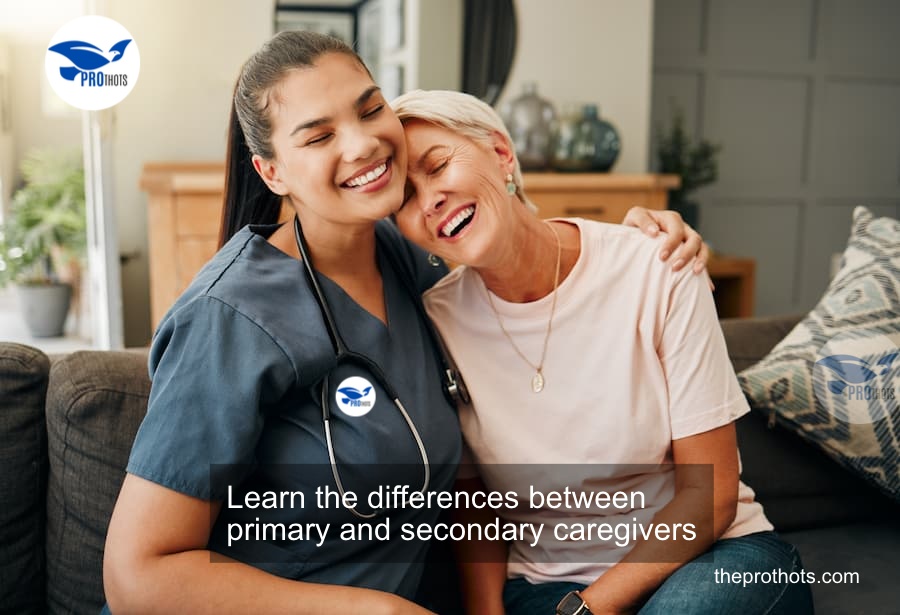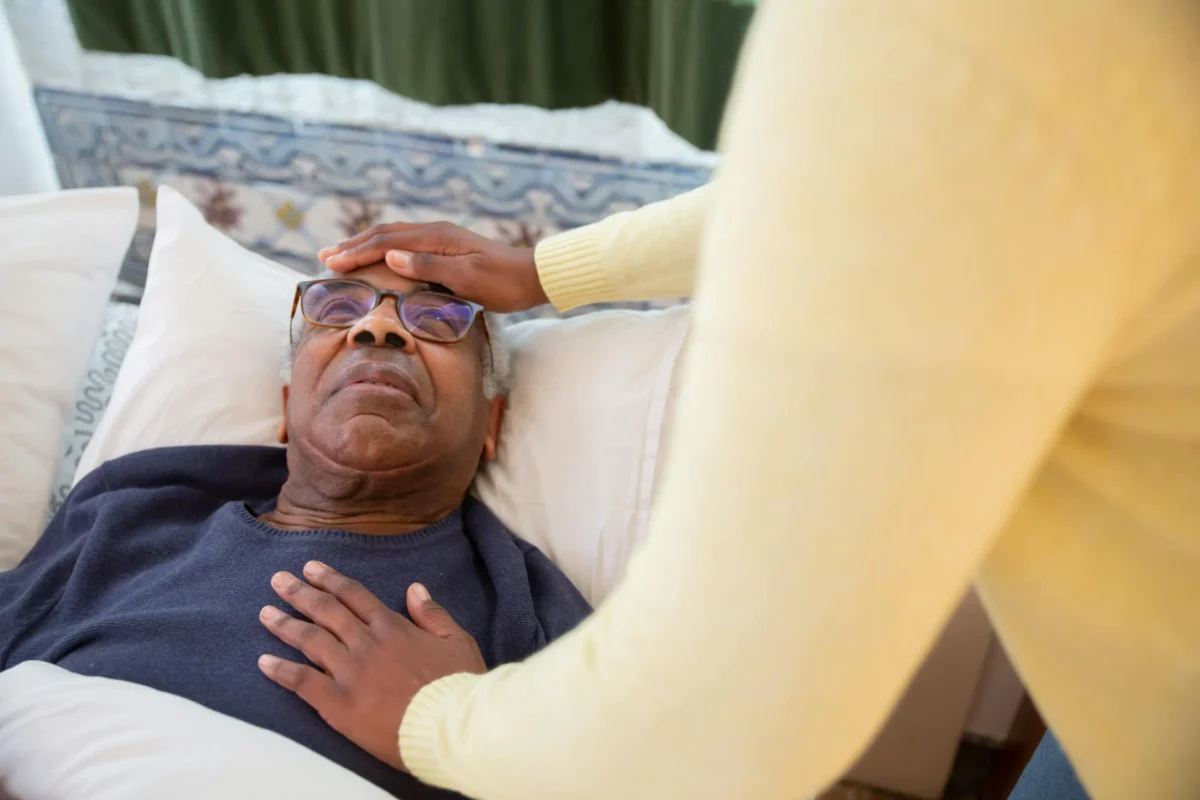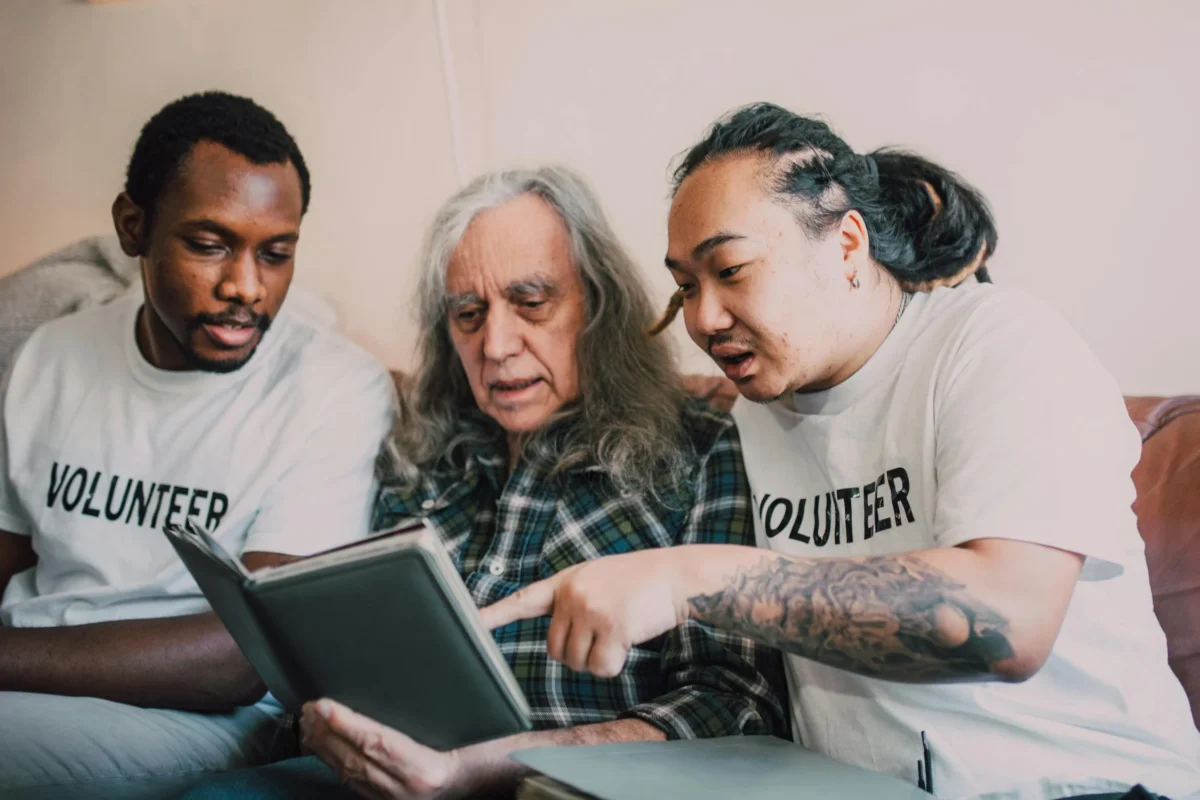Blog
What Does It Mean to Be a Primary vs Secondary Caregiver?

Primary vs Secondary Caregiver: Caring for a loved one is a deeply rewarding yet challenging responsibility. Depending on the level of care required, many families rely on both primary and secondary caregivers to meet their loved one’s needs. Many see being a caregiver as a duty and an opportunity to strengthen family bonds and provide meaningful support.
At The Prothots, we understand the struggles and joys of caregiving. Whether you are new to the role or looking for resources to make it easier, we provide valuable insights to help you navigate this journey.
Learn the differences between primary and secondary caregivers

| Aspect | Primary Caregiver | Secondary Caregiver |
|---|
| Role | Main responsibility for daily care and upbringing | Supports and assists the primary caregiver |
| Time Commitment | Majority of time spent with the child | Less time, often part-time or specific occasions |
| Decision-Making | Makes most major decisions about child’s welfare | Provides input, supports decisions |
| Emotional Bond | Typically strongest bond due to constant presence | Bond may be strong but not as consistent |
| Examples | Parent, guardian, full-time nanny | Extended family, babysitter, co-parent |
| Responsibilities | Feeding, bathing, education, emotional support | Activities, occasional caregiving, backup support |
| Impact on Child | Influences core development, values, and security | Contributes to social experiences and flexibility |
What is a Primary Caregiver?
A primary caregiver is an individual responsible for providing ongoing assistance to an underaged child or a sick, elderly, or disabled relative. This role typically involves offering emotional, physical, and practical support to help maintain the quality of life for the person in need.
Any adult can become a primary caregiver for a family member, regardless of prior experience or education. However, caregiving can be emotionally and physically demanding, requiring patience, compassion, and resilience.
The History of Caregiving and the Role of Primary Caregivers

Caregiving has been an essential part of human society since ancient times, evolving alongside social structures, medical advancements, and cultural norms. Below is a detailed historical perspective on caregiving:
Ancient Societies and Caregiving
In early civilizations, caregiving was primarily a familial duty.
- Prehistoric and Tribal Societies: Elderly community members were revered for their wisdom and often lived with their extended families. Care for the sick and disabled was a shared responsibility within the group.
- Ancient Egypt and Mesopotamia: Temples and religious institutions provided medical care, and family members typically took care of the elderly at home.
- Ancient Greece and Rome: Philosophers such as Hippocrates laid the foundation for medical ethics. Wealthy families hired caregivers (often slaves), while poorer individuals relied on family members for support.
Middle Ages: Religious Institutions and Community Care
- Monasteries and Convents: These religious institutions became centers for caregiving, providing care for the sick and elderly.
- Feudal Societies: Lords and noble families often had caregivers for the elderly and disabled members of their household, but peasants depended on extended family support.
18th and 19th Century: The Rise of Institutional Care
- Industrial Revolution: Urbanization led to the decline of multigenerational households. Governments and philanthropists established almshouses and poorhouses for the elderly and disabled.
- Nursing as a Profession: Florence Nightingale’s contributions during the Crimean War highlighted the importance of skilled caregiving, leading to formalized nursing training.
20th and 21st Century: Home-Based and Professional Caregiving
- Rise of Home Health Care: Technological advancements in medicine allowed patients to receive care at home rather than in hospitals.
- Family Caregiving Movements: Increased awareness of caregiver burdens led to legal recognition and financial support programs for family caregivers.
- Modern Caregiving: Today, caregiving encompasses professional home care, assisted living, and specialized medical support for various conditions like dementia and Alzheimer’s.
Understanding Paid Leave for Caregivers
Providing care for a loved one often requires extended time off from work. Many caregivers find that they need more than 16 weeks of paid time off, particularly when caring for someone with a chronic illness or disability.
Fortunately, paid family leave and parental leave are protected by law in many places. Your employer’s human resources department can guide you through your options. If you are new to caregiving and need guidance, explore our caregiving resources at The Prothots to gain a deeper understanding of available support.
Legal Protections for Caregivers

The Equal Employment Opportunity Commission (EEOC) prohibits workplace discrimination against primary caregivers. However, not everyone can afford unpaid leave, which is why various federal and state programs exist to offer financial support. Understanding your role as a primary caregiver vs. a secondary caregiver can help you maximize state-funded caregiver assistance programs.
What is a Primary Caregiver?
A primary caregiver is the main person responsible for assisting a loved one who is unable to care for themselves. This includes caring for aging parents, spouses, children, or individuals with disabilities. Primary caregivers help with:
- Daily living activities such as bathing, dressing, and eating.
- Managing medications and medical appointments.
- Providing emotional support and companionship.
- Handling household chores and grocery shopping.
Many states offer compensation programs for primary caregivers, ensuring they can fulfill their duties without financial hardship. In some cases, professional caregivers may step in to act as primary caregivers, especially when medical needs are involved.
What is a Secondary Caregiver?

A secondary caregiver plays a supportive role in assisting the primary caregiver. They may:
- Step in when the primary caregiver needs rest or time off.
- Assist with non-daily caregiving tasks.
- Provide respite care, offering temporary relief.
- Help with transportation to medical appointments.
The level of secondary caregiving needed depends on the care recipient’s condition and the workload of the primary caregiver.
At The Prothots, we offer a detailed guide on the differences between a primary and secondary caregiver to help families better understand their roles.
State-Sponsored Caregiver Programs
Every state has different programs to support caregivers, offering financial relief and additional resources. For those who unexpectedly find themselves in these roles, these programs can be a lifesaver. Professional caregivers can also find resources to match their expertise with families in need.
The Pennsylvania Caregiver Support Program
Caring for a loved one is emotionally and physically demanding, and financial strain can add to the stress. The Pennsylvania Caregiver Support Program helps ease this burden by offering financial aid, respite care, and counseling services for primary caregivers.
Services Provided by the Los Angeles Caregiver Support Program:

| Service | Description |
|---|---|
| Care Management | Caregivers receive professional guidance to develop personalized care plans. |
| Benefits Counseling | Assistance in navigating available financial and healthcare benefits. |
| Caregiver Education | Training programs to help caregivers manage their responsibilities effectively. |
| Financial Reimbursement | Reimbursement for caregiving-related expenses such as respite care, medical supplies, and home modifications. |
| Respite Care | Temporary relief for caregivers, allowing them to take breaks. |
| Assistive Devices | Funding for mobility aids and other supportive equipment. |
Eligibility for Caregiver Support
Caregivers must meet specific requirements to qualify for assistance through state programs. The Pennsylvania Caregiver Support Program has three eligibility categories:
Category 1: Elderly and Disability Care
- Primary caregiver: Must be 18 or older.
- Care recipient: Must be 60+ with functional impairments or diagnosed with Alzheimer’s or a related disorder.
- Relationship requirement: No requirement to be related or live together.
Category 2: Grandparents Raising Grandchildren
- Primary caregiver: Must be 55+ and not the child’s biological parent.
- Care recipient: A child under 18, being raised due to adoption or informal guardianship.
- Living requirement: Caregiver and child must reside in the same home.
Category 3: Disability Care
- Primary caregiver: Must be 55+ and related to the care recipient by blood, marriage, or adoption.
- Care recipient: Must be 18-59 with a disability.
- Living requirement: Both must reside in the same home.
Financial Eligibility for Support
While there are no strict income requirements, financial reimbursement amounts are determined based on total household income. Support is calculated using a sliding scale that considers the Federal Poverty Level (FPL) and provides aid up to 380% of the FPL.
Primary Caretaking from a Legal Perspective
Definition of a Primary Caregiver
From a legal standpoint, a primary caregiver is defined as a person who:
- Resides in the same state as the individual receiving care.
- Is at least 18 years old.
- Provides consistent care for a relative who requires daily assistance.
- Has received designation from the ward’s physician or medical practitioner.
Family law defines a primary caregiver as someone who assumes responsibility for another person’s essential needs. While specific legal definitions may vary from state to state, the overall concept remains consistent.
How to Perform Caretaking for a Relative
Caregiving often occurs in stages, depending on the individual’s needs. Understanding these stages can help caregivers prepare for the challenges ahead.
1. Accepting Changes
Many individuals do not initially recognize that they are becoming primary caregivers. This transition often occurs gradually, especially in cases involving aging parents or partners. It is essential to acknowledge this shift and seek support when needed.
2. Preparation for Caregiving
Once a caregiver realizes the responsibilities involved, preparation becomes critical. Key steps include:
- Researching the ward’s medical condition and care requirements.
- Consulting with healthcare professionals for guidance.
- Discussing expectations with the family member in need.
- Making necessary financial and work arrangements.
3. Beginning of Care
The initial phase of hands-on caregiving can be overwhelming. During this period, caregivers develop routines and strategies that work best for both themselves and the person receiving care. Important aspects include:
- Learning essential caregiving skills, such as personal care assistance and meal preparation.
- Seeking out support groups and caregiver resources.
- Establishing a schedule to balance caregiving duties and personal responsibilities.
| Stage of Caregiving | Key Responsibilities |
|---|---|
| Accepting Changes | Recognizing the shift into caregiving. |
| Preparation | Gathering medical information, financial planning. |
| Beginning of Care | Developing care routines, finding support. |
| Gaining Confidence | Becoming more comfortable with responsibilities. |
| Final Period | Transitioning out of caregiving, seeking closure. |
4. Gaining Confidence in Caregiving
At this stage, caregivers become more accustomed to their roles. Confidence in caregiving comes with experience and support. Key areas to focus on include:
- Taking breaks to avoid caregiver burnout.
- Attending caregiver education programs.
- Reaching out for emotional support from family or professionals.
- Prioritizing self-care and well-being.
5. Final Period of Caregiving
Caregiving responsibilities may end for various reasons, including the ward’s recovery or transition to professional care settings. This phase can be emotionally challenging, requiring self-reflection and adjustment.
| Coping Strategies for the End of Caregiving |
| Seeking professional counseling if needed. |
| Maintaining social connections and friendships. |
| Transitioning to a new routine and self-care. |
| Continuing involvement in caregiving communities. |
Challenges Faced by Primary Caregivers
1. Emotional and Physical Strain
Caregiving is demanding, leading to stress, anxiety, and fatigue. It is essential to seek rest and maintain personal health.
Caregiving is demanding, leading to stress, anxiety, and fatigue. It is essential to seek rest and maintain personal health. Caregiving is demanding, leading to stress, anxiety, and fatigue. The physical strain of long hours, standing for extended periods, and assisting with mobility can also take a toll on caregivers’ vascular health. Consulting a Vein Doctor can help address vein-related issues that may arise due to prolonged caregiving duties. It is essential to seek rest and maintain personal health.
2. Financial Impact
Many caregivers must adjust work schedules, which can affect financial stability. Seeking financial assistance programs and caregiver stipends can help ease the burden.
3. Balancing Personal and Caregiving Responsibilities
Juggling work, family, and caregiving can be overwhelming. Creating a structured schedule and seeking external support can alleviate some of the challenges.
Professional Support and Resources for Caregivers
If caregiving becomes too overwhelming, professional support is available. Medical home care services provide essential assistance, allowing caregivers to maintain a balance between personal life and responsibilities.
Benefits of Professional Care Support:
- Ensures high-quality medical and personal care for loved ones.
- Reduces stress on family caregivers.
- Provides structured schedules and professional expertise.
How to Apply for the Los Angeles Caregiver Support Program
Applying for caregiver support is straightforward. You can find assistance by using the Area Agency on Aging Locator to identify resources in your county.
For more information, visit The Prothots, where we provide guidance on caregiver assistance, financial aid, and balancing caregiving with personal life.
Why Support for Caregivers Matters
Being a caregiver can be fulfilling but also exhausting. Many caregivers experience burnout, stress, and financial strain. Programs like the Pennsylvania Caregiver Support Program and others nationwide help to:
- Reduce the financial burden.
- Provide respite care for much-needed breaks.
- Offer mental health resources to prevent caregiver exhaustion.
- Educate caregivers on best practices to improve the quality of care.
Final Thoughts
If you are taking on the primary or secondary caregiver role, it is essential to understand the resources available to you. From financial assistance to respite care, many programs exist to support you.
At The Prothots, we are dedicated to providing essential caregiving information, resources, and professional support to help you navigate this journey with confidence. If you or a family member needs assistance, explore our comprehensive caregiving guides and connect with support networks to make caregiving more manageable.
FAQs – Primary vs. Secondary Caregiver
- What is a primary caregiver?
A primary caregiver is the main person responsible for taking care of a loved one who needs daily assistance, such as an elderly parent, a disabled family member, or a child. They handle tasks like feeding, bathing, and medical management. - What is a secondary caregiver?
A secondary caregiver supports the primary caregiver by filling in when needed. They may help with occasional tasks, provide relief, or assist in specific situations like transportation or doctor visits. - Can a family have both a primary and secondary caregiver?
Yes! Many families rely on both to ensure their loved one gets the care they need without overwhelming one person. - How do the roles of a primary and secondary caregiver differ?
A primary caregiver provides most of the care daily, while a secondary caregiver steps in when necessary to assist or give the primary caregiver a break. - Does a primary caregiver need to be a family member?
No, a primary caregiver can be a professional caregiver, a close friend, or anyone who takes full responsibility for someone’s care. - Do secondary caregivers provide medical care?
Not necessarily. They mainly help with errands, companionship, or light tasks, though some may assist with medical needs if trained. - Can someone be a primary caregiver while working a full-time job?
Yes, but it can be challenging. Many primary caregivers balance work and caregiving by getting help from a secondary caregiver or using professional support services. - What happens if a primary caregiver needs time off?
This is where secondary caregivers play a key role! They step in when the primary caregiver needs a break, goes on vacation, or deals with personal matters. - How do you determine who should be the primary caregiver in a family?
It usually depends on availability, willingness, and ability. Families often discuss responsibilities and decide who can take on the main caregiving role. - Are primary caregivers paid for their work?
Sometimes. If they are taking care of a loved one, financial assistance may be available through government programs, long-term care insurance, or caregiver grants. - Can a secondary caregiver become a primary caregiver?
Yes, if circumstances change—like if the primary caregiver can no longer provide care—the secondary caregiver may take over the main role. - Do primary caregivers always live with the care recipient?
Not always. While many do, some provide care from a distance and arrange for additional support when needed. - What are common challenges for primary caregivers?
They often deal with emotional stress, physical exhaustion, financial strain, and difficulty balancing caregiving with personal life. - How can secondary caregivers be more helpful?
They can take on specific tasks like grocery shopping, cooking, or managing paperwork, giving the primary caregiver more time to rest. - Do primary caregivers have legal responsibilities?
Sometimes. If they are legally appointed (like through power of attorney), they may have to make medical or financial decisions for their loved one. - Can siblings share caregiving responsibilities?
Yes! In many families, siblings take turns being primary and secondary caregivers to divide the responsibilities fairly. - What support is available for caregivers?
Caregivers can find help through local caregiver support groups, government assistance programs, respite care services, and professional counseling. - Do secondary caregivers need special training?
Not usually, but depending on the care needed, they may benefit from basic training in first aid, medication management, or mobility assistance. - Can secondary caregivers help with emotional support?
Absolutely! Providing companionship, listening, and offering encouragement can make a big difference in both the caregiver’s and care recipient’s well-being. - How can families work together to avoid caregiver burnout?
Open communication, shared responsibilities, and using available resources like respite care or professional help can prevent one person from becoming overwhelmed.
